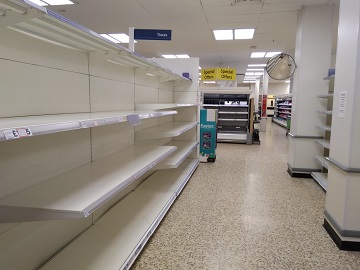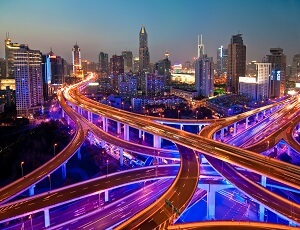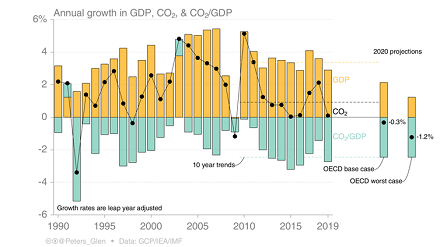9 implications of a dramatic shift to contactless commerce and society sparked by COVID-19
Today, most countries in the world are enforcing social distancing and in many cases lockdowns, forcing people to stay at home, sometimes at pain of fines or imprisonment.
This is immensely challenging, but if executed well it will curtail the spread of the virus so we can move past the peak of infections into the next phase.
This is not a one-shot infection that comes and is gone
However there are many reasons we will not be returning to life as we have considered to be usual.
One is that fears of contagion will not fully abate for, at very least, years.
There is a good chance a vaccine will be developed in record time, given the resources being thrown at it and the advanced technologies being applied, including AI. Fortunately the latest evidence is that COVID-19 is not mutating rapidly.
Yet the likelihood is that novel coronavirus will not be eradicated, but will circulate in the same way that influenza mutations continue indefinitely.
The fear will remain
 In addition, this “inevitable” pandemic has finally woken up people and governments to the extent of the danger. Undoubtedly other different viruses will emerge, we hope not as contagious or deadly. We will be far better prepared, but we will be far more fearful from the outset of any new disease, wondering whether it may be as bad or worse than the current one.
In addition, this “inevitable” pandemic has finally woken up people and governments to the extent of the danger. Undoubtedly other different viruses will emerge, we hope not as contagious or deadly. We will be far better prepared, but we will be far more fearful from the outset of any new disease, wondering whether it may be as bad or worse than the current one.
Even in the best possible scenarios a substantial proportion of people will be cautious about interacting in large groups for a long time to come.
The rise of contactless commerce and society
While the phrase ‘contactless commerce’ has usually been used to describe digital payments, I believe that a large proportion of companies will need to shift to contactless business, with limited face-to-face interaction.
As societies we will also shift to ways of living that bring people less into contact with each other.
In fact many of these trends have already been under way as we have applied digital technologies every aspect of our lives, but the are being enormously accelerated.
Here are 9 of the impacts that will stem from this broad shift, some more obvious than others.
1. Wholesale adoption of remote work
Many organizations have been adopting remote work practices to some degree for years. Right now amid pandemic almost every job that doesn’t absolutely require physical presence is being done remotely.
For some companies this has been relatively easy, as they have the tools, practices, and familiarity with these ways of working. Other firms have had to work out from scratch how to adopt remote work and have to struggle with company cultures that are antithetical to remote work, often due to lack of trust in employees.
Work in traditional workplaces such as offices will no doubt resume, however having established protocols and experienced that work can be as effective remotely as in-person, many organizations will vastly expand their remote work practices.
2. Transformation of physical retail
 The gradual shift from physical to online retail has been in place for well over two decades, to varying degrees across countries.
The gradual shift from physical to online retail has been in place for well over two decades, to varying degrees across countries.
When I speak about the future of retail, I often say that there are two knowns: that the shift to online will continue, and that physical retail will continue to exist indefinitely in some form.
Just as for news-on-paper over the last decade, the economics for physical retail will often just not stack up, leading to vicious cycles in the viability of many malls and retail precincts.
Physical retail will certainly still prosper in specific instances, for showcasing, some high-touch sectors, and particularly for those retailers who are able to make in-person shopping a powerful experience, often through technology-enabled personalization.
3. Sharing economy disrupted
The poster-children for economic transformation over the last decade were upstarts Uber and AirBnB.
Today people are far less inclined to get into a stranger’s car or let unknown visitors into their home.
Certainly the demand for deliveries will be strong and sustained for the foreseeable future, and in general platforms markets will continue to thrive. However those personal services which involve being co-located with others or exchanging things that could harbor disease will be impacted, potentially substantially.
4. Reduced local road travel
 Did we really need to spend as much time on the roads as we did?
Did we really need to spend as much time on the roads as we did?
While no-one likes being forced to stay at home, as we experience and understand that business and society can function without us always being in the same place, we will readjust our patterns of commuting and travel.
Energy is substantially the worst-performing sector among US stocks this year, reflecting the expected reduced demand for oil.
Infrastructure planners around the world have assumed a trend of steady increase of road travel. They will need to revisit their assumptions, and reconsider their development plans.
5. Automation of customer-facing roles
Automation of work is a long-standing and continuing trend, which will accelerate in a number of domains due to the pandemic, notably any roles that require non-essential personal contact.
Fast food chains have over the last couple of years stepped up the pace of introducing in-store kiosks and other mechanisms to move beyond human service. The shift will become rapid.
Social security offices will close to be replaced by online processes, banks will likely accelerate the phasing out of their branches.
6. Shift to online events
There is no true substitute for an in-person event, where you can have your attention fully captured, be inspired, and serendipitously connect with like-minded people.
However well-designed online events can be extremely valuable, have advantages over physical events, including being able to facilitate useful discussions and engagement between participants, and of course save the time and cost of travel. Certainly the number of online events has grown substantially over the years, but until the last month they have been substantially under-appreciated and under-used relative to their value.
As a professional speaker I love the excitement of a large physical event and understand the impact. But the pace of shift to online events has been massively accelerated. In the coming year and beyond we will discover how far the shift from in-person to digital events goes, potentially a long way.
7. Reduced carbon emissions
 Due to some of the shifts mentioned above and more, carbon emissions look set to be fall this year for the first time since the global financial crisis.
Due to some of the shifts mentioned above and more, carbon emissions look set to be fall this year for the first time since the global financial crisis.
However the picture is more complex than it initially appears, as the massive fall in oil prices are undermining the case for investment in alternative energy sources, and governments’ focus on climate change has been diverted to fighting the pandemic.
Transport accounts for 15% of carbon emissions, so reduced travel will have a significant impact, however most other sources of greenhouse gases are not likely to be reduced significantly in an economy with reduced contact.
8. In-home health and aged care
For over a decade I have spoken and written about how healthcare and aged care will shift from dedicated facilities to home-based care supported by technology.
This will progress far faster, not only to avoid the spread of disease among patients and the elderly, but also to reduce the burden on institutional healthcare, which may have to deal with irregular sharp crises.
The technologies to support the chronically ill and elderly in their homes are continuing to advance at a rapid pace. This will also require community support, another important facet of the future of healthcare.
9 .Social challenges of isolation
Even before the current pandemic, many countries have been experiencing a ‘loneliness epidemic’, with many people, younger as well as old, feeling isolated and at times intensely lonely.
If we shift to a world with far less direct contact, taking out even the opportunity for people to chat to staff in shops or service centers in their everyday dealings, this could well intensify.
My hope is that even as we have reduced direct interaction in our work, shopping, and everyday activities, many localities and communities will shift to provide more support for those lacking human connection.
There are of course many other implications of a shift to contactless commerce and society; the 9 presented here are just some of the more prominent ones.
I will cover other related long-term impacts and second-order effects of the pandemic in forthcoming pieces, partly to help provide input to post-pandemic strategy development. Stay posted!
Images: Dark Dwarf, NeilsPhotography, whiz-ka, Science Alert/Glen Peters/ Cicero



